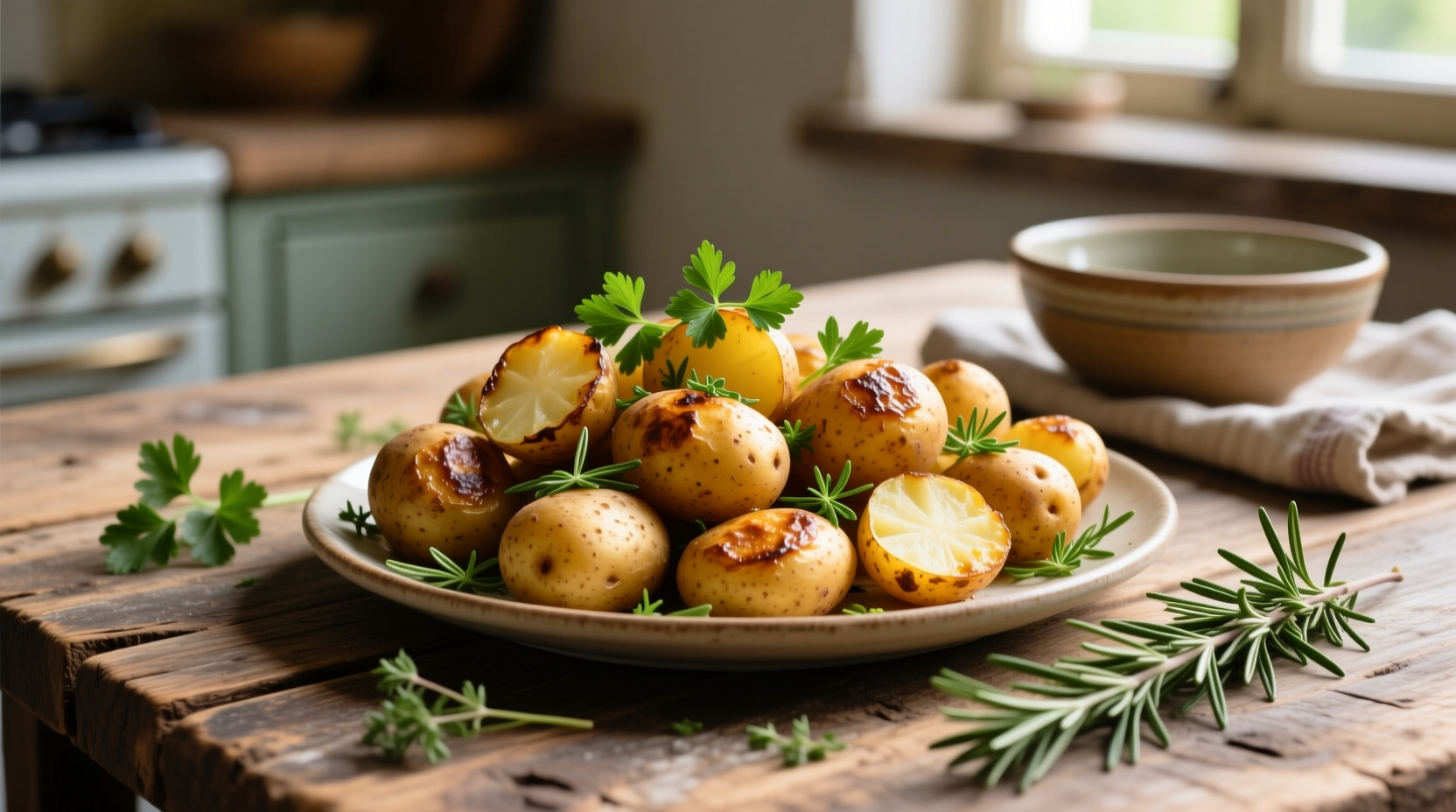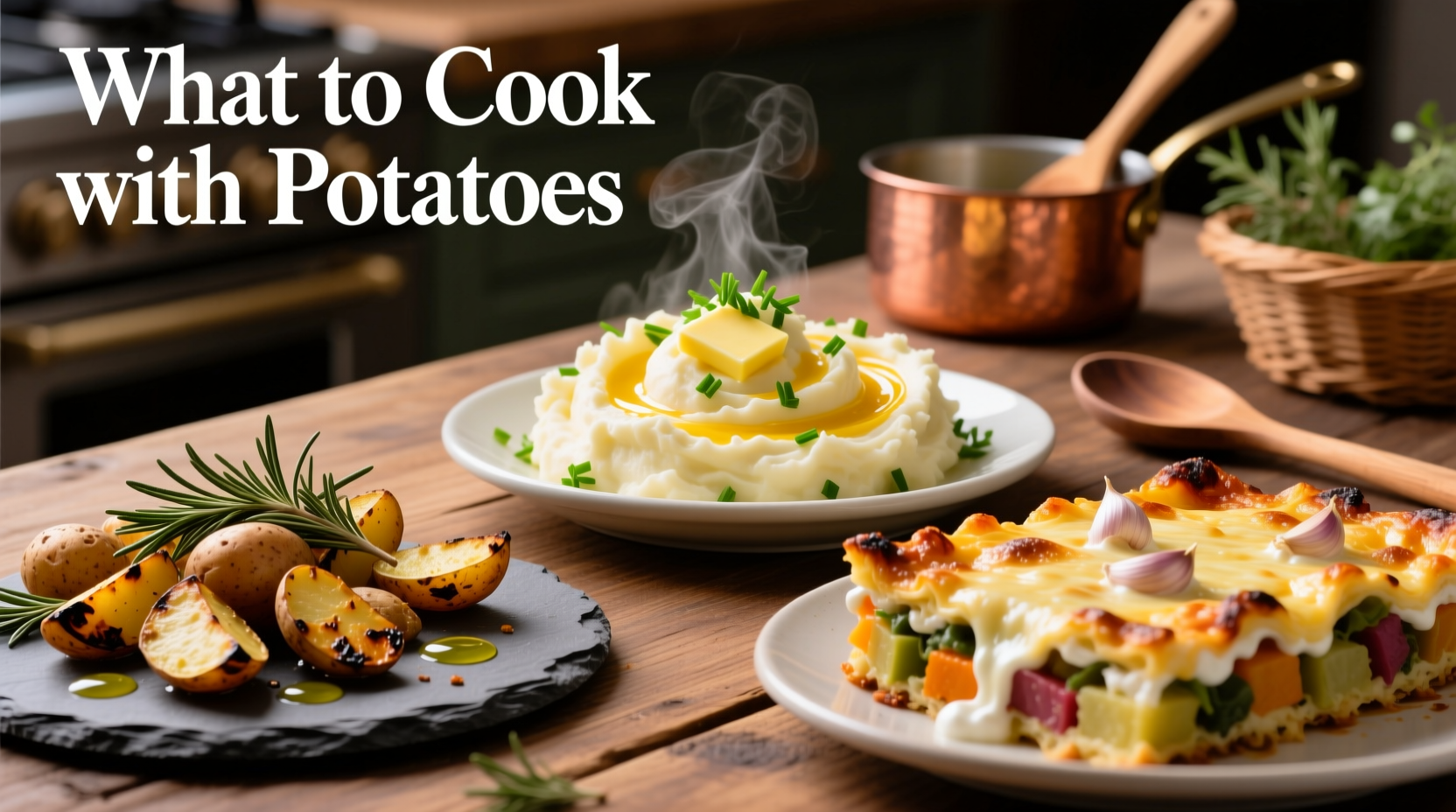When you're staring at a bag of potatoes wondering what to cook with them, you're not alone. Potatoes rank as the world's fourth-largest food crop and appear in 85% of American households weekly according to USDA data. This humble ingredient offers incredible versatility across global cuisines while providing essential nutrients like potassium and vitamin C. Whether you need a 20-minute weeknight solution or an impressive weekend centerpiece, potatoes deliver consistent results that please everyone at the table.
Quick Weeknight Potato Solutions (30 Minutes or Less)
Busy weeknights demand fast, reliable meals. These potato-based dishes leverage simple techniques that maximize flavor with minimal effort—perfect when time matters most.
Speedy Garlic Parmesan Roasted Potatoes
Crispy on the outside, tender inside—this 25-minute side dish works with nearly any protein. Toss 1.5 pounds diced Yukon Golds with 2 tablespoons olive oil, 4 minced garlic cloves, 1 teaspoon dried rosemary, salt, and pepper. Roast at 425°F for 20 minutes, then sprinkle with ¼ cup grated Parmesan during the last 5 minutes.
One-Pan Potato Breakfast Hash
Transform leftover boiled potatoes into a satisfying morning meal in just 15 minutes. Sauté 2 cups diced potatoes with 1 diced bell pepper and 1 small onion until golden. Create wells in the mixture, crack 2 eggs into them, and cover until eggs set. Top with fresh herbs and hot sauce for a protein-packed start to your day.
| Potato Variety | Best Cooking Methods | Flavor Profile | Starch Content |
|---|---|---|---|
| Russet | Baking, Frying | Earthy, robust | High (21-22%) |
| Yukon Gold | Roasting, Mashing | Buttery, rich | Medium (17-18%) |
| Red Bliss | Boiling, Salads | Mild, sweet | Low (15-16%) |
| Sweet Potato | Roasting, Baking | Sweet, caramel notes | Medium (18-19%) |
USDA Agricultural Research Service data shows starch content directly impacts texture outcomes—high-starch potatoes break down easily for fluffy mashed potatoes while low-starch varieties hold their shape in salads.
Weekend Specials Worth the Extra Time
When you have more time to cook, elevate your potato game with these restaurant-quality dishes that impress without requiring professional skills.
Dauphinoise Potatoes with Herb Crust
This French classic features thinly sliced potatoes baked in cream with garlic. Layer 2 pounds thinly sliced Yukon Golds in a buttered dish with 1½ cups heavy cream, 2 minced garlic cloves, and pinch of nutmeg. Bake covered at 375°F for 45 minutes, then uncover and top with ¼ cup breadcrumbs mixed with chopped thyme for 15 more minutes until golden.
Spanish Tortilla with Caramelized Onions
Spain's beloved omelet makes a stunning brunch centerpiece. Slowly caramelize 2 large onions while boiling 1.5 pounds sliced potatoes. Whisk 6 eggs with salt, then combine with potatoes and onions. Cook slowly in an oven-safe skillet until set, then finish under the broiler for perfect browning.
Potato Dishes by Meal Type
Match your potato preparation to your meal timing for optimal results. Understanding these context boundaries prevents common mistakes like soggy breakfast potatoes or underseasoned dinner sides.
Breakfast Potatoes: Texture Matters Most
For morning meals, prioritize crisp texture through proper drying and high-heat cooking. After boiling or steaming, spread potatoes on a towel to absorb excess moisture before frying. This simple step prevents steaming and ensures golden-brown results every time—a technique professional chefs use but rarely mention in home recipes.
Dinner Centerpieces: Building Flavor Layers
When potatoes serve as the main component, develop complex flavors through technique sequencing. Start with aromatics (onion, garlic, herbs), add potatoes, then incorporate liquids gradually. This layering approach creates depth that simple boiling cannot achieve. For example, in potato leek soup, sautéing leeks before adding potatoes develops their natural sweetness through the Maillard reaction.

Global Potato Inspirations
Potatoes traveled from South America to worldwide kitchens through Spanish explorers in the 16th century. This culinary journey created distinctive regional preparations worth exploring:
Irish Boxty: Traditional Potato Pancakes
Mix 2 cups grated raw potato with 1 cup mashed potato, 1 cup flour, 1 teaspoon baking powder, and buttermilk to form a thick batter. Fry spoonfuls in butter until golden on both sides—perfect with smoked salmon and sour cream.
Indian Aloo Gobi: Spiced Potato Cauliflower
Sauté 2 cups diced potatoes and 3 cups cauliflower florets with 1 tablespoon curry spices (turmeric, cumin, coriander). Add 1 diced onion, 2 minced garlic cloves, and 1 tablespoon ginger. Simmer until tender, then finish with fresh cilantro.
Potato Cooking Science Made Simple
Understanding basic food chemistry transforms your potato results. Potatoes contain two starch types: amylose (which gels when heated) and amylopectin (which swells). The ratio determines cooking behavior:
- High-starch potatoes (Russets) work best for fluffy preparations like mashed potatoes—they absorb liquids readily and break down easily
- Waxy potatoes (Red Bliss) maintain structure in salads and soups due to lower starch content
- All-purpose potatoes (Yukon Golds) offer the perfect balance for most cooking methods
Professional chefs at the Culinary Institute of America recommend salting potato water properly—use 1.5 tablespoons per gallon—to enhance flavor penetration without breaking down the potatoes' structure.
Storage and Food Safety Essentials
Store potatoes in a cool, dark place between 45-50°F (7-10°C) to prevent sprouting and greening. Never refrigerate potatoes, as cold temperatures convert starch to sugar, creating off-flavors when cooked. According to FDA food safety guidelines, cooked potatoes should not remain at room temperature longer than 2 hours to prevent bacterial growth.
Maximizing Potato Leftovers
Transform extra potatoes into entirely new dishes:
- Leftover roasted potatoes → Crispy breakfast hash
- Extra mashed potatoes → Potato pancakes or shepherd's pie topping
- Boiled potatoes → Hearty potato salad with mustard vinaigrette
When repurposing, add moisture back through broth or cream since reheating dries potatoes. This simple adjustment maintains texture quality in second-day meals.











 浙公网安备
33010002000092号
浙公网安备
33010002000092号 浙B2-20120091-4
浙B2-20120091-4